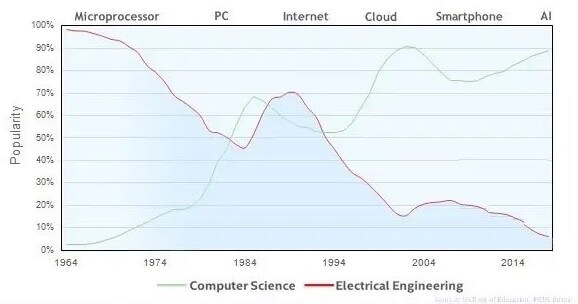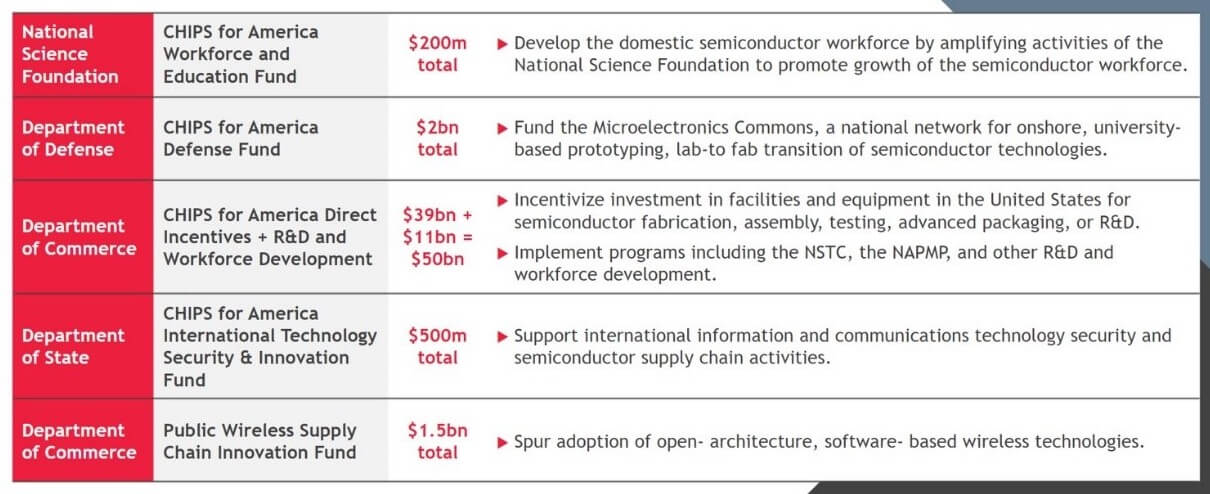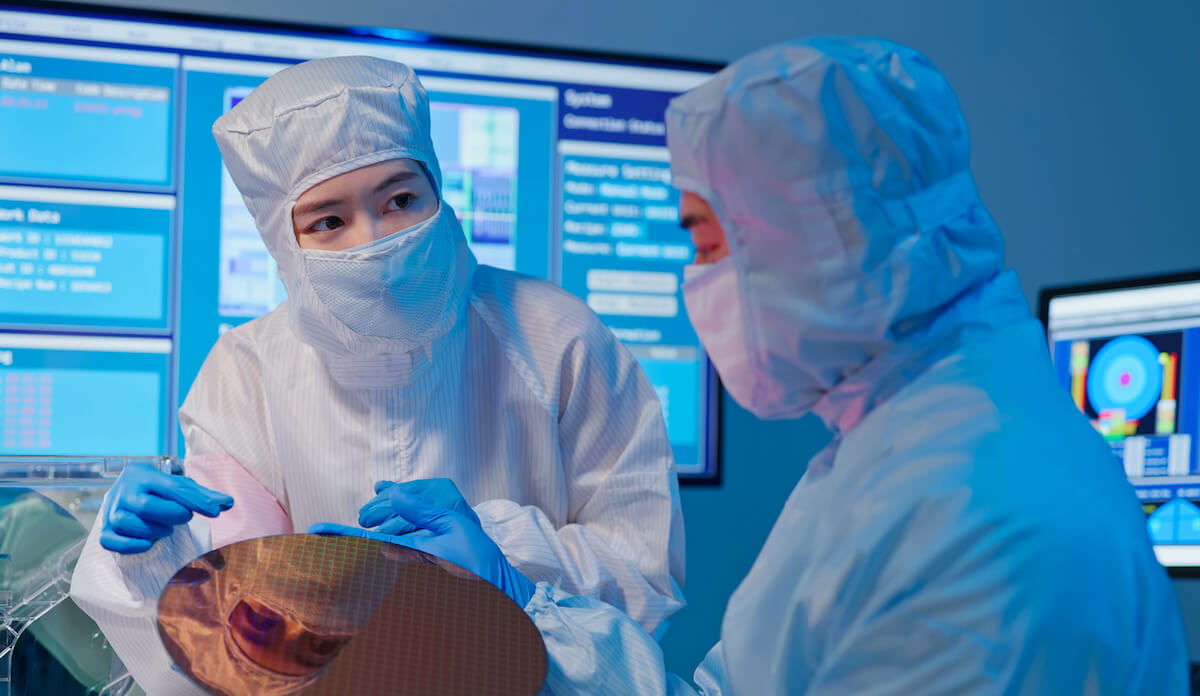There are multiple challenges facing the semiconductor industry as multiple new fabs launch across the United States. A key one is where they are going to get the semiconductor workforce needed to fully staff and operate them. One challenge is getting students excited again about designing and manufacturing semiconductors. A recent article in the South China Morning Post that was referenced in PC Magazine, stated that Chinese students are not interested in pursuing a career in semiconductors. Rather, their focus is on AI and big data because they believe these technologies are clearer prospects.
In India, there have been reports that software classes are being oversubscribed, and students are not signing up for civil or electrical engineering as the jobs are not as prestigious, and salaries aren’t as high.
The US has had a similar problem for several years, where the allure of hitting it big at an AI or big data startup has the computer science classes bulging at the seams and electronic engineer tracks in decline (Figure 1).

During IEDM 2022, the evening panel focused on how to draw talent to the semiconductor industry. Theoretical discussions included “how do we bring back the cool” and “How can the industry create a passion for semiconductor technology?” Other suggestions included being more flexible and not limiting candidates to electrical engineers. This was the case through the 1990s, when chemists, physicists, and chemical engineers, were hired along with electrical engineers, and then trained while on the job. People didn’t necessarily need a degree to achieve success in the industry. There were many non-degreed engineers and managers on staff at multiple companies, which expanded the potential workforce.
In Korea, both Samsung and Hynix have partnered with universities to ensure a strong workforce by guaranteeing that students will have jobs when they graduate.
Unfortunately, some of the semiconductor industry employment problem is self-inflicted. In the past, the cyclicality of the industry and revenue led to massive layoffs. As a result, some of those engineers sought out employment in more stable fields. This is happening in 2022 and 2023 with the industry slowdown. GlobalFoundries and Intel are either laying off or furloughing staff to cut costs until the next uptick in chip purchasing takes place. There is typically a trickle-down effect so it is likely equipment companies and material companies will also need to furlough staff with this downturn.
Enter the Chips Act
By funding a 200M training initiative for universities and schools, the CHIPS and Science Act provides part of the solution for increasing the semiconductor workforce. This is in addition to $11 billion that also goes to workforce development, other R&D, NSTC, and the NAPMP (Figure 2).

A webinar held by SEMI, BDO, and mySilicon outlined what companies needed to do to obtain CHIPS Act funding. In not so many words, they suggested that working with educational institutions on workforce training would be an important part of the application process. It is probably not a coincidence that most of the new projects are centered around universities with a strong background in microelectronics.
Intel Arizona is partnering with ASU and the University of Arizona. Intel in Ohio is partnering with Ohio State and other universities. Skywater is building a fab in conjunction with Purdue, and Everspin is also building a new facility in Indiana. Micron and GlobalFoundries in New York State are collaborating with SUNY Albany and its nanotech program, along with other strong engineering universities. Samsung near Austin and TI are tapping into North Texas State and other universities close by.
Intel, for instance, has vowed to spend $100 million to improve semiconductor education and research in the United States, and half of that money will go towards trying to line up enough people to work at Intel’s manufacturing site in Ohio. in September, Intel announced the first phase of funding for its Ohio Semiconductor Education and Research Program and committed $17.7 million over the next three years to fund eight projects, working with more than 80 colleges and universities in Ohio to develop semiconductor education and workforce programs.
Another near-term resource for the semiconductor workforce is the military. Tokyo Electron has launched a partnership with the US Army to help veterans get jobs when they are discharged from the armed forces. Hopefully, the program TEL has initiated will spread across the industry, as a considerable number of these veterans have electro-mechanical experience that could be transferred quickly to a semiconductor facility. <Embed podcast video>
During the IEDM panel discussion, someone asked how the industry can reach down further to high school, and grade school. Multiple robotics competitions take place across the United States each year that span from elementary school to high school. Samsung is in the 13th year of its Samsung Solve for Tomorrow STEM competition, where public school teachers across the U.S. can apply to the program by submitting an application that empowers students to inspire real-world change and address some of society’s most critical issues using problem-based learning. Lam Research donated to FIRST® Global, a nonprofit inspiring science and technology leadership and innovation in young people from all nations through robotics. The contribution, which will be distributed over three years, will help cultivate diverse future talent in science, technology, engineering, and math (STEM). Volunteers from local chapters of the American Vacuum Society (AVS) give demonstrations in elementary schools about how vacuum works. The Intel Foundation supports the Million Girl’s Moonshot program to equip more than one million girls from under-resourced communities with an engineering mindset.
There is a lot of activity out there simulating STEM activity. What is encouraging is that it has gone from areas that have been associated with a microelectronics community, such as Silicon Valley, to First Global and the Million Girls Moonshot, which provide STEM programs to underserved communities, which will in the long run create a more diverse workforce. Now all the semiconductor community needs to do is work on making the semiconductor industry cool again.
This article first appeared in the 2023 3D InCites Yearbook. Read the issue here.





















